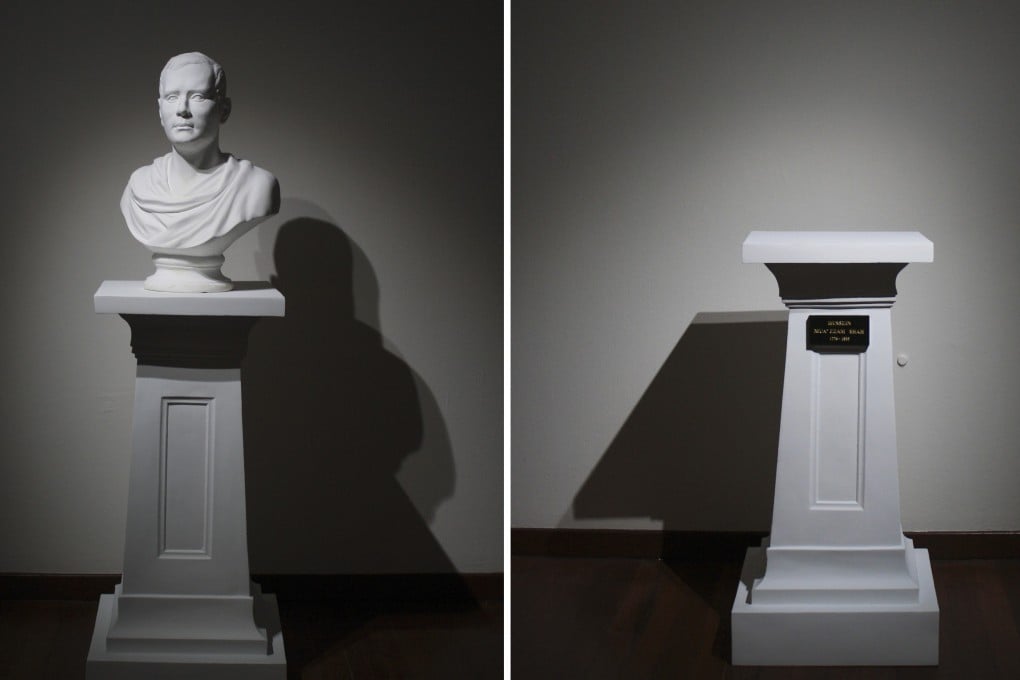Raffles who? 200 years since the British colonialist, Singapore would rather he disappear
- In an effort to ‘decolonise’ its past, the Lion City is putting a twist on its bicentennial ‘commemoration’ of the landing of Sir Stamford Raffles
- It’s spending a year celebrating neither date, nor man. It’s almost like the British colonialist disappeared. Oh wait, he just did

For half a century since 1969, a white polymarble statue of Sir Stamford Raffles stood by the Singapore River, purportedly at the exact spot where the British colonial official first landed when he reached the Lion City.
This month, it “disappeared”. In a city state where vandalism can be punished by caning, a state-sanctioned artwork was commissioned to create an optical illusion that the statue was no longer there. The aim was to make Singaporeans think harder about Raffles. “Is our story just about one date or one man?,” asked a government spokesman.

The incongruence, say analysts, carries political undertones. After 50 years of a simplistic national history where an Englishman “discovered” a sleepy Malay fishing village, the Singapore government is reworking the past to better suit present norms and future objectives.
The aim is to pay greater tribute to the Malay community in Singapore, better recognise the country’s place in Southeast Asia and forestall any criticisms that the country is celebrating colonialism.
NOT A FISHING VILLAGE
It did not start off that way. When talk of the bicentennial started making the rounds in 2017, the chatter was that the ruling People’s Action Party (PAP) was looking to recreate the winning formula of the last major anniversary.